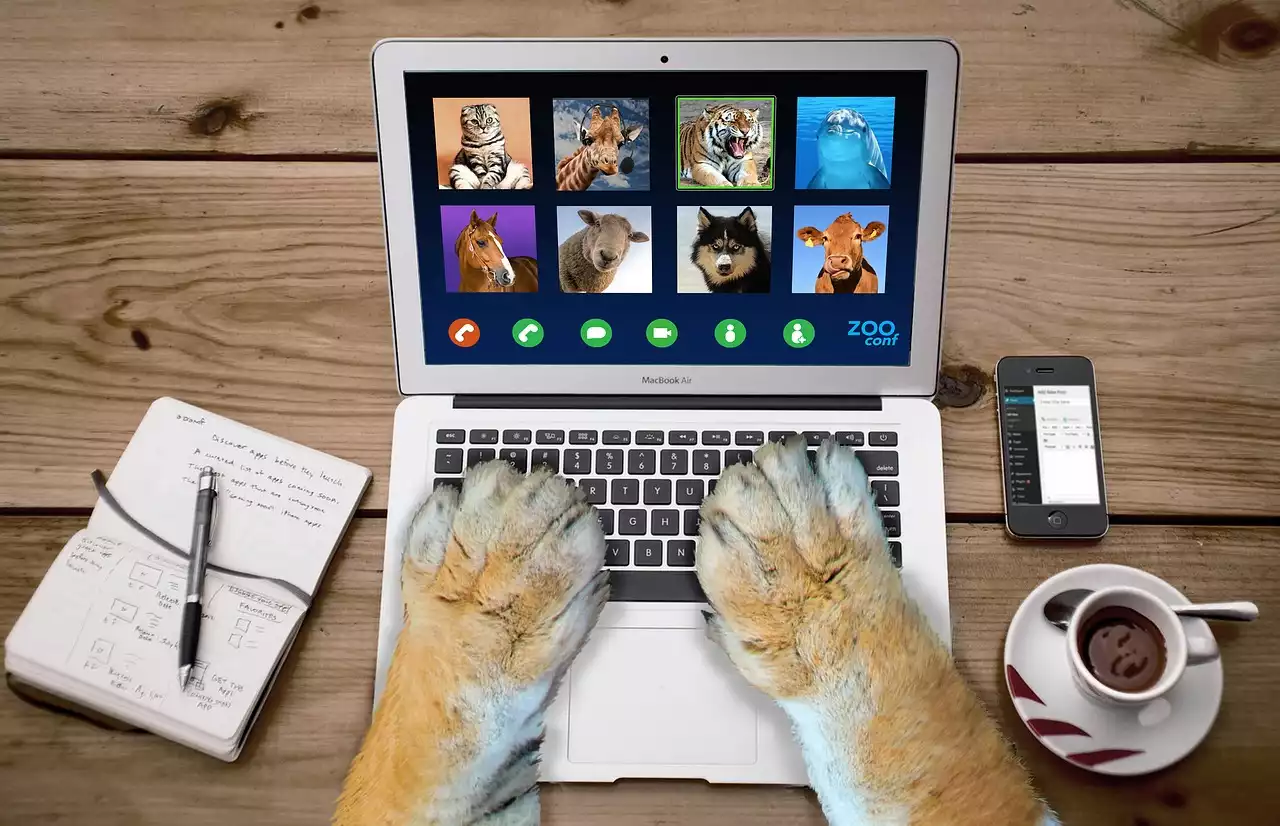Importance of Remote Collaboration Tools
In today's digital age, remote work has become increasingly common. With the rise of the gig economy, freelancers, and remote teams, businesses need to adapt to new ways of working. Remote collaboration tools have become essential for businesses to stay competitive and efficient. These tools allow team members to communicate and work together seamlessly, regardless of their location.
Collaboration tools can help teams work together more effectively by providing a central platform for communication and collaboration. They can help reduce communication barriers, increase productivity, and streamline workflow. Remote collaboration tools also allow teams to work across different time zones, which can be a challenge for traditional work teams.
However, with so many remote collaboration tools available, it can be challenging to choose the right ones for your team. In the next section, we will explore the top six remote collaboration tools that can take your team's productivity to the next level.
How to Improve Remote Collaboration
Top 6 Remote Collaboration Tools for Teams
1. Zoom
Zoom is a video conferencing tool that has gained popularity in recent years. It offers a simple and user-friendly interface that allows teams to have virtual face-to-face meetings. Zoom offers features like screen sharing, recording, and chat that make it easy for teams to collaborate.
Zoom's popularity has skyrocketed during the COVID-19 pandemic, as it has become a go-to tool for remote teams. It is available on desktop and mobile devices, making it easy for teams to connect from anywhere.
2. Slack
Slack is a messaging and collaboration tool that offers real-time communication for teams. It allows teams to create channels for specific projects, departments, or topics. Slack also integrates with other tools like Google Drive, Trello, and Zoom, making it a central hub for team communication.
Slack's main advantage is its ability to reduce email clutter and streamline communication. It allows teams to communicate in real-time, which can help increase productivity and efficiency.
3. Trello
Trello is a project management tool that uses boards, lists, and cards to help teams organize and prioritize tasks. It offers a simple and intuitive interface that makes it easy for teams to collaborate and manage projects.
Trello's main advantage is its flexibility. It allows teams to create custom workflows and adapt to different project needs. Trello also integrates with other tools like Slack, Google Drive, and Zoom, making it a powerful tool for remote teams.
4. Google Drive
Google Drive is a cloud-based storage and collaboration tool that allows teams to create, share, and edit documents, spreadsheets, and presentations. It offers real-time collaboration, which makes it easy for teams to work together on projects.
Google Drive's main advantage is its accessibility. It can be accessed from anywhere with an internet connection, making it a great tool for remote teams. It also integrates with other Google tools like Gmail, Google Calendar, and Google Meet, making it a central hub for team collaboration.
5. Asana
Asana is a project management tool that offers features like task management, project tracking, and team collaboration. It allows teams to create projects, assign tasks, and track progress. Asana also integrates with other tools like Slack, Google Drive, and Zoom, making it a central hub for team communication.
Asana's main advantage is its ability to provide a clear overview of project progress. It offers a visual representation of tasks and deadlines, which can help teams stay on track and meet their goals.
6. Microsoft Teams
Microsoft Teams is a collaboration tool that offers features like chat, video conferencing, and file sharing. It allows teams to collaborate in real-time and stay connected from anywhere. Microsoft Teams also integrates with other Microsoft tools like OneDrive, SharePoint, and Outlook, making it a powerful tool for remote teams.
Microsoft Teams' main advantage is its integration with other Microsoft tools. It allows teams to work seamlessly across different platforms, which can help increase productivity and efficiency.
Features and Benefits of Each Tool
Each of the remote collaboration tools we've discussed has unique features and benefits that can help your team work more effectively. Zoom offers virtual face-to-face meetings, Slack reduces email clutter, Trello provides project management, Google Drive offers cloud-based storage, Asana provides task management, and Microsoft Teams integrates with other Microsoft tools.
By using these tools, teams can improve communication, collaboration, and productivity. They can streamline workflow, reduce communication barriers, and work across different time zones. Remote collaboration tools can also help teams stay connected and engaged, which can improve team morale and job satisfaction.
How to Choose the Right Remote Collaboration Tool for Your Team
Choosing the right remote collaboration tools for your team can be challenging. It's important to consider your team's needs, budget, and workflow when choosing a tool. Here are some factors to consider when choosing a remote collaboration tool:
1. Team Size
Consider the size of your team when choosing a collaboration tool. Some tools are better suited for smaller teams, while others are more suitable for larger teams.
2. Communication Needs
Consider how your team communicates when choosing a collaboration tool. Some tools offer real-time communication, while others are more geared towards asynchronous communication.
3. Project Management Needs
Consider your team's project management needs when choosing a collaboration tool. Some tools offer simple task management, while others offer more advanced project management features.
4. Integration Needs
Consider the tools your team is already using when choosing a collaboration tool. Look for tools that integrate with your existing tools to avoid duplicate work and maximize productivity.
5. Budget
Consider your budget when choosing a collaboration tool. Some tools are free, while others require a subscription or license.
Best Practices for Using Remote Collaboration Tools Effectively
Using remote collaboration tools effectively requires some best practices. Here are some tips to help you get the most out of your remote collaboration tools:
1. Set Clear Expectations
Set clear expectations for how your team will use the collaboration tools. Establish guidelines for communication, project management, and file sharing.
2. Train Your Team
Train your team on how to use the collaboration tools effectively. Provide resources and support to help your team get up to speed.
3. Use Video Conferencing
Use video conferencing whenever possible to help your team stay connected and engaged. Virtual face-to-face meetings can help reduce communication barriers and improve team morale.
4. Set Regular Check-Ins
Set regular check-ins to review progress, address issues, and provide feedback. Regular check-ins can help keep your team on track and improve communication.
5. Encourage Collaboration
Encourage collaboration among team members. Use collaboration tools to facilitate teamwork and build a sense of community among team members.
Potential Challenges and How to Overcome Them
Remote collaboration tools can present some challenges. Here are some potential challenges and how to overcome them:
1. Technical Issues
Technical issues can arise when using remote collaboration tools. Ensure that your team has access to technical support and resources to troubleshoot issues.
2. Communication Barriers
Communication barriers can arise when using remote collaboration tools. Encourage open communication and provide resources to help team members overcome language or cultural barriers.
3. Time Zone Differences
Time zone differences can be a challenge for remote teams. Establish clear communication protocols and set expectations around response times to avoid confusion.
4. Remote Work Burnout
Remote work burnout can be a challenge for some team members. Encourage work-life balance and provide resources to help team members manage stress and avoid burnout.
Remote Collaboration Tool Implementation Checklist
Implementing remote collaboration tools can be challenging. Here's a checklist to help you implement remote collaboration tools effectively:
1. Choose the Right Tools
Choose the right remote collaboration tools for your team based on your needs, budget, and workflow.
2. Train Your Team
Train your team on how to use the collaboration tools effectively. Provide resources and support to help your team get up to speed.
3. Set Clear Expectations
Set clear expectations for how your team will use the collaboration tools. Establish guidelines for communication, project management, and file sharing.
4. Encourage Collaboration
Encourage collaboration among team members. Use collaboration tools to facilitate teamwork and build a sense of community among team members.
5. Regular Check-Ins
Set regular check-ins to review progress, address issues, and provide feedback. Regular check-ins can help keep your team on track and improve communication.










